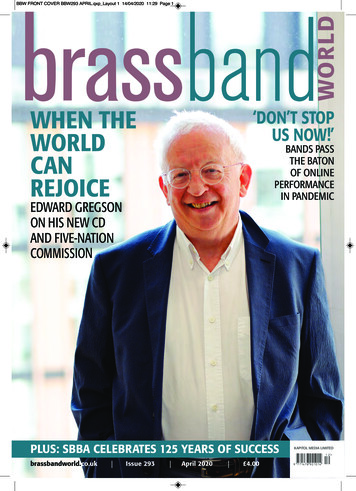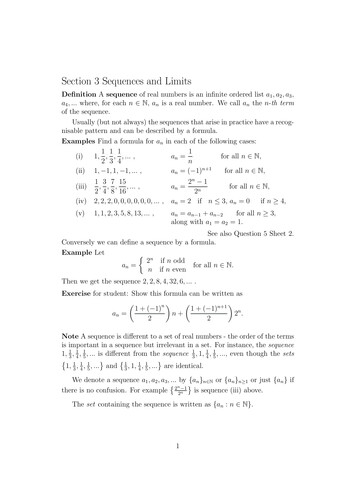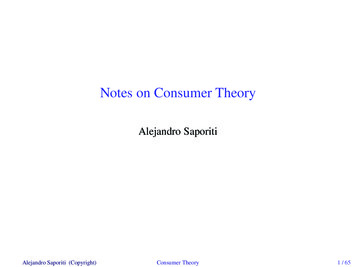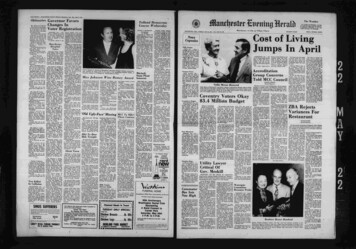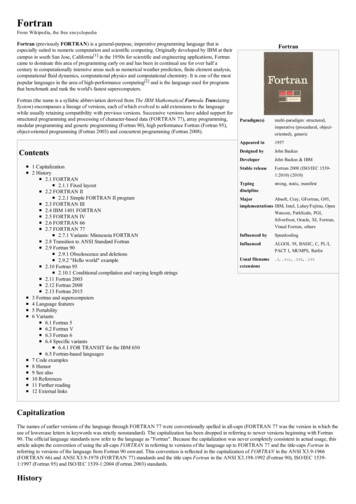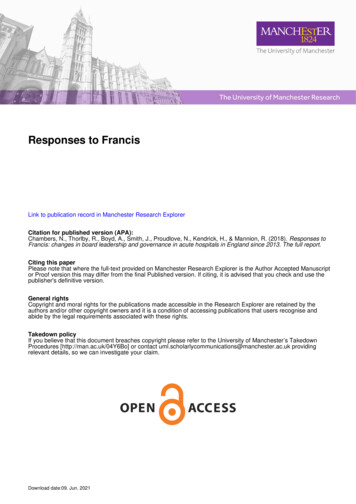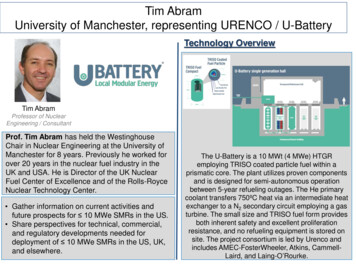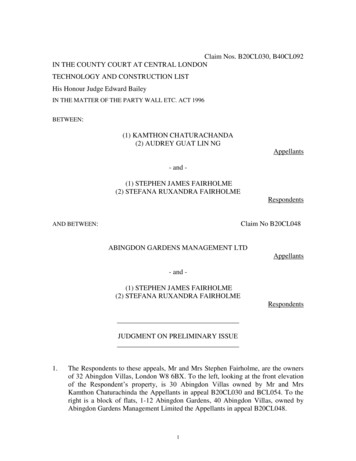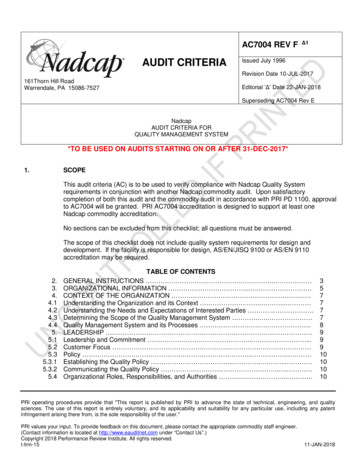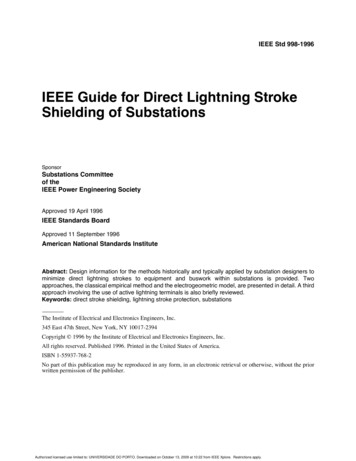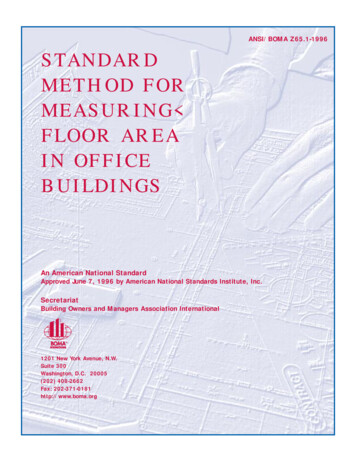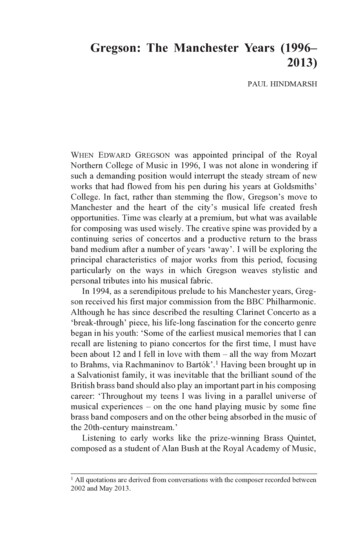
Transcription
Gregson: The Manchester Years (1996–2013)PAUL HINDMARSHWHEN EDWARD GREGSON was appointed principal of the RoyalNorthern College of Music in 1996, I was not alone in wondering ifsuch a demanding position would interrupt the steady stream of newworks that had flowed from his pen during his years at Goldsmiths’College. In fact, rather than stemming the flow, Gregson’s move toManchester and the heart of the city’s musical life created freshopportunities. Time was clearly at a premium, but what was availablefor composing was used wisely. The creative spine was provided by acontinuing series of concertos and a productive return to the brassband medium after a number of years ‘away’. I will be exploring theprincipal characteristics of major works from this period, focusingparticularly on the ways in which Gregson weaves stylistic andpersonal tributes into his musical fabric.In 1994, as a serendipitous prelude to his Manchester years, Gregson received his first major commission from the BBC Philharmonic.Although he has since described the resulting Clarinet Concerto as a‘break-through’ piece, his life-long fascination for the concerto genrebegan in his youth: ‘Some of the earliest musical memories that I canrecall are listening to piano concertos for the first time, I must havebeen about 12 and I fell in love with them – all the way from Mozartto Brahms, via Rachmaninov to Bartók’.1 Having been brought up ina Salvationist family, it was inevitable that the brilliant sound of theBritish brass band should also play an important part in his composingcareer: ‘Throughout my teens I was living in a parallel universe ofmusical experiences – on the one hand playing music by some finebrass band composers and on the other being absorbed in the music ofthe 20th-century mainstream.’Listening to early works like the prize-winning Brass Quintet,composed as a student of Alan Bush at the Royal Academy of Music,1All quotations are derived from conversations with the composer recorded between2002 and May 2013.
228Manchester Soundsor his early Oboe Sonata, it is evident that Gregson was alreadylearning much from the examples of Bartók and Hindemith. Occasionally one can sense the wit of Walton and more often the timelessmodality of Vaughan Williams, but this is counterbalanced by anincisiveness drawn from his love of Stravinsky: ‘Hearing the Rite ofSpring for the first time changed my musical world’. In his 30s,Gregson was drawn to the mosaic forms of Tippett, audibly so in thePiano Sonata (1982), and the temporal and textural freedom of Lutoslawski in works like the Metamorphoses (1979) and the ClarinetConcerto.The composers he cites as his most important influences areShostakovich and Alban Berg. The impact of Berg’s highly wroughtpoly-tonal expressionism was a catalyst in broadening the expressiverange of Gregson’s mature work. The other ever-present exemplar hasbeen Shostakovich. In the early Music for Chamber Orchestra (1968)the reliance on the Fifth Symphony as a model was perhaps too nearthe surface, but in his later work, including the Concerto for Orchestra, Cello Concerto, the fugue in Rococo Variations and especially theSymphony in Two Movements, Gregson has returned often to theRussian’s example, finding the way he uses atonal twelve-note sets asa means of creating tension and emotional contrast within his customary tonal/modal language a particularly fruitful model. This is aconsciously eclectic mix – Gregson has described himself as a polystylist – informing an approach that is a model of economy anddiscipline; and, since his move to Manchester, remarkably consistent,increasingly colourful and wide-ranging in expression.The Manchester concertosWhat captured Gregson’s imagination as a young man and stillinforms his creative thinking some fifty years later is the dramaticnature of the concerto genre: ‘I was intrigued to discover the ways inwhich composers pitted the soloist (or individual) against the powerof an orchestra, as if in a Shakespearian tragedy (e.g., Hamlet) andhow the themes were shared and developed, often reaching a climaxand resolution that no other musical form could achieve.’ Gregson’sfirst effort was a Concertante written in 1966 as an RAM student forhis own instrument, the piano, with brass band. Distant memory maylend enchantment, but I have a lingering impression of romanticmelody and a level of enterprise and craftsmanship that one did notalways encounter in Salvationist repertoire.
Gregson: The Manchester Years229In his first full-scale concerto, composed for French horn in 1971,Gregson attempted a rapprochement between the technical and stylistic ambition of the 20th-century mainstream and the traditions of thebrass band in which he was nurtured. Five years later his popular TubaConcerto appeared, also originally with brass band, although it hasjust as often been performed with orchestra or wind band. In thecontext of his later concertos, the Tuba Concerto is notable for theinclusion of a few bars from the pioneering example that RalphVaughan Williams composed in 1954, as a fleeting moment of musical homage. Since then, the idea of referencing, occasionally throughdirect quotation but more often through stylistic suggestion or paraphrase, has become one of Gregson’s creative trademarks:The Violin Concerto (2000) looks back with affection to some 20th-centurylandmarks of the violin repertoire. The Concerto for Piano and Wind paystribute to those composers whose concertos I loved when I was a teenager.There are no actual quotes used, rather a more general stylistic ‘conflict’where neo-classicism meets romanticism head on. In the slow movement ofmy Saxophone Concerto (2006), I actually quote the opening of the BergViolin Concerto, mainly because my own musical fabric in that movement isbuilt on a twelve-note row with a strong reference to major and minor thirds(which the Berg note row is built upon). In my Trumpet Concerto (1983), theslow movement uses Shostakovich’s musical cipher DSCH as the mainreference point to what is an In Memoriam to the Russian master who haddied not long before I started writing the work.Concerto for Piano and Wind, HomagesComposing a Concerto for Piano and Wind with wind accompanimentbrings to mind Stravinsky’s masterwork of 1924. Gregson’sinstrumentation is identical, with the addition of a soprano saxophone,but any direct influence is minimal. Subtitled Homages, Gregson’sreferencing is much broader, in keeping with his own eclecticapproach to style and influence. Commissioned by the BerkshireMusic Trust in 1995, it is dedicated to that fine British composerpianist John McCabe, who gave the first performance of a revisedversion in November 1997 with the RNCM Wind Orchestraconducted by Clark Rundell, shortly after Gregson’s appointment ascollege principal. The writing for piano at the start of the high-spiritedToccata, with its double octaves, brings Bartók’s concertos to mind.The lyrical second subject is more romantically tinged – with thevoices of Rachmaninov or Poulenc somewhere in the background. Afurther nod in the direction of Bartók’s Concerto no. 2 and a
230Manchester Soundssuggestion of Prokofiev’s Third, cleverly woven in on the piano as acountersubject to the main theme, drive the music towards a poundingclimax.The middle movement is an elegantly worked passacaglia, and thefinale, Rondo-Burlesque, takes its rhythmic impetus from the exampleof Bartók’s many dance movements. As the driving rhythms ease intosomething more regular, the melodic outline of the piano figurationgradually transforms itself into a new more sustained melody on thebrass. This is a 12th-century English hymn melody credited to StGodric – a counterpart to the Hungarian folk melodies that Bartókintegrated into his folk-inspired works perhaps.Concerto for Violin and OrchestraThe Violin Concerto is a Millennium piece. Composed in the lastmonths of the 20th century, and commissioned by the Hallé for its newleader Lyn Fletcher, it was first performed under Kent Nagano at theBridgewater Hall in February 2000. It resonates with distant memoriesof violin concertos of the century, recalled with affection: ‘I found itimpossible to resist the temptation to look back and give somerespectful nods in certain musical directions. The music doesn’t useany direct quotation, but it has an illusory veneer of so doing –without, I hope, any self-consciousness.’ Concerto ‘spotters’ mighthear echoes of Berg, Prokofiev, Walton and John Adams, but theunderlying musical argument – always Gregson’s primaryconsideration – is very much his own. There is also a significantextra-musical dimension that rarely appeared in Gregson’s earlierabstract musical designs. Each movement is prefaced by lines ofpoetry. The first is from Oscar Wilde’s The Harlot’s House: ‘But she– she heard the violin, and left my side, and entered in; Love passedinto the house of lust.’ The violin emerges out of a sensuous, butstrangely threatening texture. In Wilde’s poem, the woman is hauntedby the sound of a distant waltz, with the violin as the instrument ofseduction. Gregson responds with a soaring cantilena and, at theclimax, a bitonal parody of the waltz.Its menacing, black-edged colours are transformed into moresensual hues for the second movement, in response to the evocativelines of Paul Verlaine’s Chanson d’automne: ‘The drawn-out sobs ofthe violins of autumn wound my heart with a monotonous languor.’Strings, with harp and tam-tam, begin the transformation. The soloisttakes it up and in the central section braying horns add their power tothe main theme, which is beginning to take on the role of an idée fixe.
Gregson: The Manchester Years231The music of the opening, subtly transformed, provides an oasis oftranquillity before the final dance, which is an athletic rondo, inspiredby the violin of Irish folk-lore and headed, appropriately, by two linesof W. B. Yeats: ‘And the merry love the fiddle, And the merry love todance.’Concerto for Saxophone and OrchestraGregson’s perennial concern to provide a strong underlying musicallogic is undiminished in the Saxophone Concerto (2006), which is nota tribute-dominated work, but reveals his orchestral palette at its mostseductive. It was commissioned and first performed by the Japanesesaxophonist Nobuya Sugawa, with the BBC Philharmonic conductedby Clark Rundell. The music exploits musical contrasts to the full –angular thematic cells (and their associated harmonic ambiguities) onthe one hand and the calmer, overtly tonal allure of his melodies onthe other – with much more freedom, not to say abandon, especiallyin the first of the three movements, which the composer describes asa ‘City-scape’. The solo alto saxophone is heard at the start from thedistance, as though from the other end of a long avenue at dusk, orthrough a mist or haze. Eventually, soloist and orchestra come together in full view as it were in a burst of energy that builds to a wildjazzy dance, only to be dissipated in a moment of gentle, hauntinglyricism. Once again the finale opens in search of a theme, whicharrives at the end in a blaze of life-affirming colour.In the slow movement the musical landscape is transformed. It isprefaced by another quotation, on this occasion from Samuel TaylorColeridge’s poem Kubla Khan (of 1798): ‘A damsel with a dulcimerin a vision once I saw. Could I revive within me her symphony andsong?’ Coleridge’s wonderfully evocative lines draw from Gregson aseries of song-like paragraphs, some of which rework material from apiece for oboe and percussion entitled Shadow of Paradise (2005).The bitter-sweet chromatic harmony melds without any sense ofcontrivance into the fleeting reference to the opening of the BergViolin Concerto, after which, the harmonic content becomes simpler,unfolding into the final ‘song’, set in the composer’s favourite siciliana pulse, expresses a heartfelt sadness.Concerto for Cello and Orchestra, A Song for ChrisOf all Gregson’s concertos so far, A Song for Chris (2007) is the mostpersonal in its tribute. Written for a classical-size orchestra, it wascommissioned by the RNCM Manchester International Cello Festival
232Manchester Soundsand first performed in May 2007 by Li-Wei and ManchesterCamerata, conducted by Douglas Boyd. It was dedicated to thememory of Christopher Rowland (1946–2007) who was director ofchamber music at the RNCM throughout Gregson’s tenure as principal.The Concerto’s four movements – Meditation, Intermezzo, Toccata-Scherzo and Song – span a single arch, with the two short outermovements framing two fast central ones. As in the clarinet andsaxophone concertos the soloist enters alone, meditating on a series ofsmall fragments. These gradually take on a more organic flow, evolving through as ‘a pyramid twelve-tone chord’ to an intense climax.For many years Christopher Rowland had been a member of theFitzwilliam String Quartet – the first to record a complete set of theShostakovich quartets. Given that Chris was born in the same year asShostakovich completed his Third Quartet, Gregson came up with theidea of referencing its opening bars in the middle of the Intermezzo,commenting that ‘The ghost of Shostakovich looms large throughoutthe concerto in more ways than one.’ A number of other fleetingreferences are secreted in, such as the little four-note motto that runsthrough the Russian’s first Cello Concerto in the energetic ToccataScherzo. But these are not the ‘main events’ in this eloquent music,the design of which follows Gregson’s well-established method,projecting the ‘life’ of the musical motifs from their enigmatic birth,through pathways of conflict and contrast to end in hopeful resolution,in this case a simple, uplifting melody with bells.Breaking the brass band mouldIn his 20s and early 30s, Gregson wrote extensively for the brass band,effectively refining his technique in that medium. Over the years hehas returned to the medium from time to time, and he continu
context of his later concertos, the Tuba Concerto is notable for the inclusion of a few bars from the pioneering example that Ralph Vaughan Williams composed in 1954, as a fleeting moment of musi- cal homage. Since then, the idea of referencing, occasionally through direct quotation but more often through stylistic suggestion or para-phrase, has become one of Gregson’s creative trademarks .
